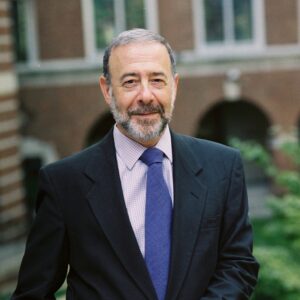Search Results
Back to JTS Torah Online's Main page
Speaking of Exodus: Beshallah
Jan 29, 2021 By David G. Roskies | Commentary | Beshallah
My mother, Vilna-born, spoke a very idiomatic Yiddish. When she wanted to convey how delicious something was she would say: “ketsa-PIKH-is bi-DVASH.” Although I studied Sefer Shemot in seventh grade, in a Yiddish day school, it wasn’t until my first year as a member of Havurat Shalom, where we read, translated, and subjected the weekly parashah to open debate, that I was able to identify the source of this delicious expression: “The house of Israel named it manna; it was like coriander seed, white, and it tasted like wafers in honey” (Exod. 16:31).
Read More
Voices from the Warsaw Ghetto: Writing Our History
Jan 22, 2020 By David G. Roskies | Public Event audio
A discussion with JTS’s Dr. David G. Roskies about his powerful new collection of writings from the Warsaw Ghetto, recording the Holocaust from the perspective of its first interpreters, the victims themselves.
Read More
Go Forth: The Grammar of Remembrance
Nov 4, 2019 By David G. Roskies | Commentary | Lekh Lekha
Jewish destiny begins with “Lekh-lekha,” “Go forth.” It marks the beginning of our journey through covenantal space; the beginning of our obligations under the terms of the covenant; the beginning of our family romance, so fraught with jealousy and betrayal; and the beginning of our ongoing dialogue with God. God speaks to Abram seven times in the parashah, tracking his every move, until, having reached the age of 99, Abram is addressed for the first time by his new covenantal name of “Avraham.” God speaks to him both oracularly, in verse, and in simple prose; both by day and by night: sometimes in a state of wakefulness and sometimes in a vision.
Read More
Israel’s Heroic and Traumatic Journey
Jun 22, 2018 By David G. Roskies | Commentary | Hukkat
For 39 years the children of Israel had been making their perilous way through the desert. At long last, on the first new moon of their 40th year, they set out on the last leg of the journey, as it is written, “The Israelites, even the whole congregation, came into the wilderness of Zin” (Num. 20:1). The road ahead was by no means assured, however, for no sooner did they arrive there than Miriam died, followed shortly thereafter by her brother Aaron, with Moses, the third member of this incomparable first family, mere days away from losing favor with God. The people were still reeling from Korah’s revolt, which had just claimed the lives of 15,000 rebels. Who would stand between the living and the dead were another plague to descend upon them?
Read More
Change a Story and You Can Change the World
Feb 1, 2017 By David G. Roskies | Podcast or Radio Program
By learning the power of twice-told tales, three restless, rebellious Jews—Rebbe Nahman of Braslav, I. L. Peretz, and I.B. Singer—were reborn as Yiddish storytellers. By returning to fantasy and the live, spoken language of the people, they turned storytelling into an autonomous, highly creative and potentially explosive activity. A series of three podcasts.
Read More
Itzik’s Journey
Nov 18, 2016 By David G. Roskies | Commentary | Vayera
He was our Bob Dylan and Dylan Thomas: a Yiddish troubadour and hard-drinking lyric poet who wrote in regular rhymes and rhythms about the lives and unrequited loves of the downtrodden. His name was Itzik Manger, and the Bible was the book he loved most in the world, especially those parts that told an inside, personal story.
Read More
The Heavens, the Poet, and the People
Sep 25, 2015 By David G. Roskies | Commentary | Ha'azinu
Between May and December 1943, the poet Yitshak Katzenelson was incarcerated with his last surviving son, Zvi, in Vittel, a German transit camp in France. There Yitshak kept a diary-cum-journal in Hebrew and completed The Song of the Slaughtered Jewish People in Yiddish, the longest epic poem to have survived the Holocaust. The pivotal ninth canto is a bold, even blasphemous, response to Parashat Ha’azinu.
Read More
Our Gifts to the World
Feb 5, 2011 By David G. Roskies | Commentary | Terumah
Most visibly, most palpably, this portable structure is what set the Israelites apart from the nations, that bodied forth their difference, their chosenness. It is by carrying out God’s design with such zeal, artistry, and precision, with such an outpouring of gifts, of terumah, that this ragtag of former slaves turned itself into a nation of priests.
Read MoreSUBSCRIBE TO TORAH FROM JTS
Our regular commentaries and videos are a great way to stay intellectually and spiritually engaged with Jewish thought and wisdom.




